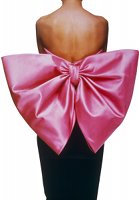The Local newsletter is your free, daily guide to life in Colorado. For locals, by locals.
My love affair with Yves Saint Laurent began in high school. While shopping at the Denver Design District with my mother, I became smitten with a pair of high-waisted, beige sailor pants, and a red wool dress with three-quarter sleeve and flounced hem—both of which I own to this day.
YSL inspired legions of fashionistas like myself, and his legacy lives on: Yves Saint Laurent: The Retrospective opens at the Denver Art Museum this month. DAM director Christoph Heinrich recently spoke to 5280 about the importance of the exhibit and what it means for Denver.

You saw the retrospective in Paris. What inspired you to bring it here?
I don’t know anything about sewing, but I walked through it and thought it was so inspiring and beautiful. And I really learned how fashion and daily life go together, and how the history of YSL is, at the same time, the history of the last 50 years.
It’s about women’s lib, the wild late-’60s in Paris, women who become CEOs, and all of the imaginary expeditions and travels that couture or fashion can create. This is a designer who got his ideas from everywhere and was able to inhale these impressions from other cultures and stay true to himself. In every dress, you could see the different sources of inspiration, but you always saw his individual handwriting.
About 200 pieces will be on display from the original 330. How difficult is it trying to coordinate a retrospective of this scope?
It’s a very ambitious project. [The pieces] get treated like artworks. The way they travel, with couriers, and the installation process is at least as ambitious and as challenging as if we were doing a major antiquities show or a major art show. It’s not that everything gets folded up in a suitcase or two and travels in the freight room of a plane. They treat is as the treasure that it is. Yves Saint Laurent never sold any of the dresses that he showed on the runway. So when you saw a runway show and loved the Mondrian dress, he would have made the dress to your body measures, and the one that was on the model would go back into the archives.
Is there a section of the exhibit that is a personal favorite?
I’m a big fan of Catherine Deneuve, so the section about the dresses that he designed for Belle de Jour that became so much a metaphor for her acting was very interesting. There’s also a wonderful section that shows his creative desk. It has all of the drawings and images and things that he might have loved. It becomes almost like his creative mind. It’s not just a working tool desk—it’s like looking into his head. And then of course the big finish, which is just jaw-dropping, and that is the 40-something ball gowns. It has music and a wonderful theatrical presentation. It offers this pushing the envelope of design, which will be a wonderful match for the couture.
Is there any special programming going on in conjunction with the exhibit?
There will be an interactive component called the Fashion Studio, which will be fun for kids and young adults and families, including a little runway. We want to give our visitors the opportunity to try out something, to interact with material, to do something they’ve never done before or that they always wanted to do.
Denver is not exactly known as an international fashion capital. What do you think the response to this retrospective will be?
We’ve got to change this. It’s a new city, it’s a young city, and I think the people here are curious to explore, to learn, to try out, and they are very open-minded. We have women here who can wear it, so…what else do I need to say?
Do you think the exhibit will make a lasting impression on people here?
I think we’re ready for it. [The Met had] amazing success with the Alexander McQueen show, but it’s almost as if [our YSL show] comes from the other side of the world. Because it’s all about beauty, elegance, and style, and McQueen was so much about breaking the traditions. As soon as you look closer to the fashion legacy or the legacy of some fashion designers, you see they are as different as artists. It’s certainly not all about the same vocabulary; it can be all over the place and that’s something that excites me.
It’s been awhile now that great museums have been showing fashion and couture. As soon as you look closer at the legacy of some fashion designers, you see they are as different as artists. It’s certainly not all about the same vocabulary; it can be all over the place, and that’s something that excites me.
Future plans: Do you hope to bring more fashion exhibits to Denver?
What we are very committed to is textile art in general. We are getting a full-time textile curator and an 8,000-square-foot exhibition space. We have a stunning textile collection just shy of 5,000 objects. That’s a treasure, and I think over the next years textiles will become an important part of our programming. And we’ll see how we do with Yves Saint Laurent. I’m very much committed to continuing it. There’s more to explore, no question.
—Images courtesy of (from top): Sophie Carre/Fondation Pierre Bergé-Yves Saint Laurent; Fondation Pierre Bergé-Yves Saint Laurent/Gilles Tapie; Fondation Pierre Bergé-Yves Saint Laurent/A. Guirkinger; Sophie Carre/Fondation Pierre Bergé-Yves Saint Laurent; Fondation Pierre Bergé-Yves Saint Laurent/A. Guirkinger












